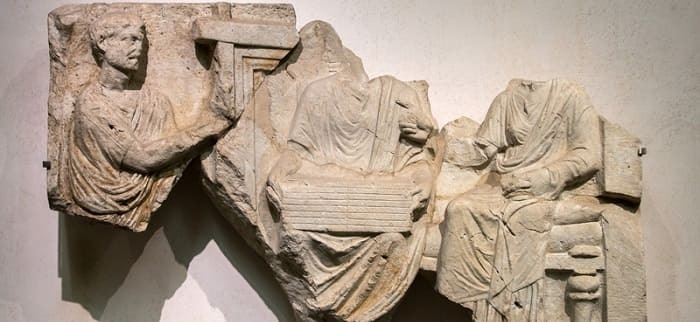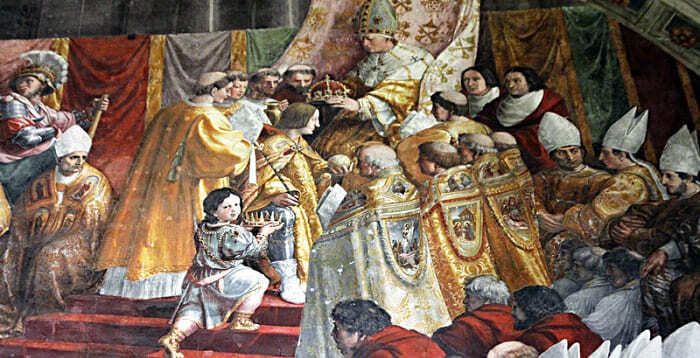

The Avars were not a simple ethnic group but a confederation of heterogeneous people from various races including Rouran, Hephthalites, and Turkic-Oghuric races. These people were primarily the members who had migrated to the Pontic Grass Steppe region of modern-day Ukraine, Russia, and Kazakhstan. They originally hailed from Central Asia and had to migrate to the new region only after the fall of the Asiatic Rouran Empire in 552 CE.
Historians who have carried out intensive research on Avars claim them to be the successors of the Huns. After years of warfare and taking over of land, they successfully established the Avar Khaganate which controlled strategically significant parts of Dagestan from the early 13th century to the 19th century.
Historian Christoph Baumer, in his work, links the Avars with the Rouran Khangate of Mongolia, which was established in northern China. The empire fell to the Gokturks in 552 CE, which coincides with the timeline of the rise of Avars. However, not all scholars agree with this assertion and the question of the origin of the Avars still remains debatable.
Historical records suggest the first mention of the Avars to be from the Priscus of Panium in 463 CE. Here, they were mentioned in connection with another profound tribe, the Sabirs, whom historians regard as the subset of the Huns. But this theory as well does not provide a concrete answer and it is unclear whether Priscus mentions the same Avars who had fled to Mongolia in 552 CE or not.
There has been a stark difference made between the earlier Avars and the latter Avars. Peter Heather and Denis Sinor, senior historians, assert that the latter Avars were a practically different group but with the same name. The prime distinction between the two was that the earlier Avars were a confederacy of the region, while, on the other hand, the later Avars were the refugees who had fled from central Asia.

A funerary slab of Priscus in the baths of Diocletian in Rome
The Avars had served, with loyalty, as nomads in the service of Rome. However, this was true only until the death of Justinian in 565 CE. The contract signed between them was annulled by Justin II (Justinian I’s successor). The reason for such action was the Avars’ demand for permission to cross the southern Danube.
Sources suggest that the Avars had successfully conquered the plains along the Danube River, and had laid siege to Constantinople. However, they had to taste defeat by Charlemagne in the late 700s.
The relations between the Eastern Roman Empire and the Avar Khaganate are studied in a different light as well; here, the Persians were considered to be benefited from the temporary deterioration of the relations between the two.
The episode of the rise of the Avar Empire began when the Avars set out to build their empire under Bayan I, on the plains of Pannonia. The major expansionist war in the Pannonia region (in all directions) was witnessed under Bayan I.
The ethnic composition widened as well. Now, the Slavic people began migrating to Pannonia. They were treated with the same lack of regard as the Kutrighurs. The Avar base of operations in the ‘new homeland’ was overseen by Bayan I and it is suggested that he may have chosen it for its association with the Huns. On this, historian Erik Hildinger comments that- Attlia’s old capital (The Ring) was chosen as the headquarters of the Avars. In addition to this, Bayan attacked Byzantine territory, seizing the city of Sirmium. The Avard captured Singidunum and Moesia and were finally defeated in Adrianople in 587 CE.
Historians like Christoph Baumer talk about the techniques and tricks used by Bayan I to drive his armies into the Balkans, demanding tribute from the Eastern Empire, invasion of Greece, etc. The military tactics used by the Avars show a resemblance to those used by the Huns. For instance, they were brilliant horsemen.
Justin II waged a war against the Sassanids in 572 CE. It concluded only after 592 CE. Further, the Avars were driven from the regions of the Balkans and were sent back to the Pannonia region by the imperial troops under general Priscus.
The Phocas’ Rebellion of 602 is also significant as it destroyed the Avars. Historian Theophanes notes that “The usurpation of Phocas was followed by an attack on the empire, both east and west, by the Persians on the one hand and the Avars on the other.
But two years later the Khagan [King of the Avars] was induced to make peace by an increased annual stipend.”
This was followed by a plague with broke out in the Balkans. Bayan I also became a victim of the deadly disease and was succeeded by his son who tried to carry forward his father’s legacy. He led a campaign in 629 CE against Constantinople. But the campaign turned out to be a total failure.
During the reign of emperor Heraclius, the Avars stopped getting payments. People were in distress, and this intensified after the death of bayan I’s son in 630 CE. The Bulgars rose in revolt and ultimately civil war broke out between the Avars and the Bulgars. The Avars won this struggle but the cost was too much to bear and the Avars’ power declined significantly.
Baumer notes a decline in the material culture of Avars during this period. Historian Peter Heather comments on the situation of the Avars, comparing it with that of the Huns, emphasising the lack of governmental capacity to rule over a large number of subjects, and turning to intermediaries. The system involving the intermediate leaders worked as planned under bayan I but was crushed after his reign.
A full-fledged civil war broke out in 794 CE and as a result, the leaders of both factions were killed. During this time, Charlemagne attacked and took over The Ring. This marked the official end of the empire in 796 CE. The Avars, however, revolted again in 799, only to be crushed by the Franks.

Charlemagne coronation
It is the legacy of the Avars that is to be remembered forever, particularly, in changing the ethnic make-up of the regions which were formerly conquered by them. They radically changed the world. Their legacy marks the large-scale displacement of people like the Lombards and the Salcs. In addition to this, scholars emphasise their contribution and significant role in breaking the political and military power of the Roman Empire in its latter half.
Q1. What was the language of Avars?
Ans. The Avars communicated primarily in Avaric, which is also regarded as the ‘language of the mountains’. It is a northeastern Caucasian language.
Q2. Why did the Avars disappear?
Ans. After the fall of the empire, they gradually yet mysteriously disappeared as a ‘distinct political and ethnic unit’ and have left no concrete historical records.
Q3. Why are Avars accredited to have made the fastest migration?
Ans. They travelled from the Mongolian region in northern china to Hungary in just about one to two decades.